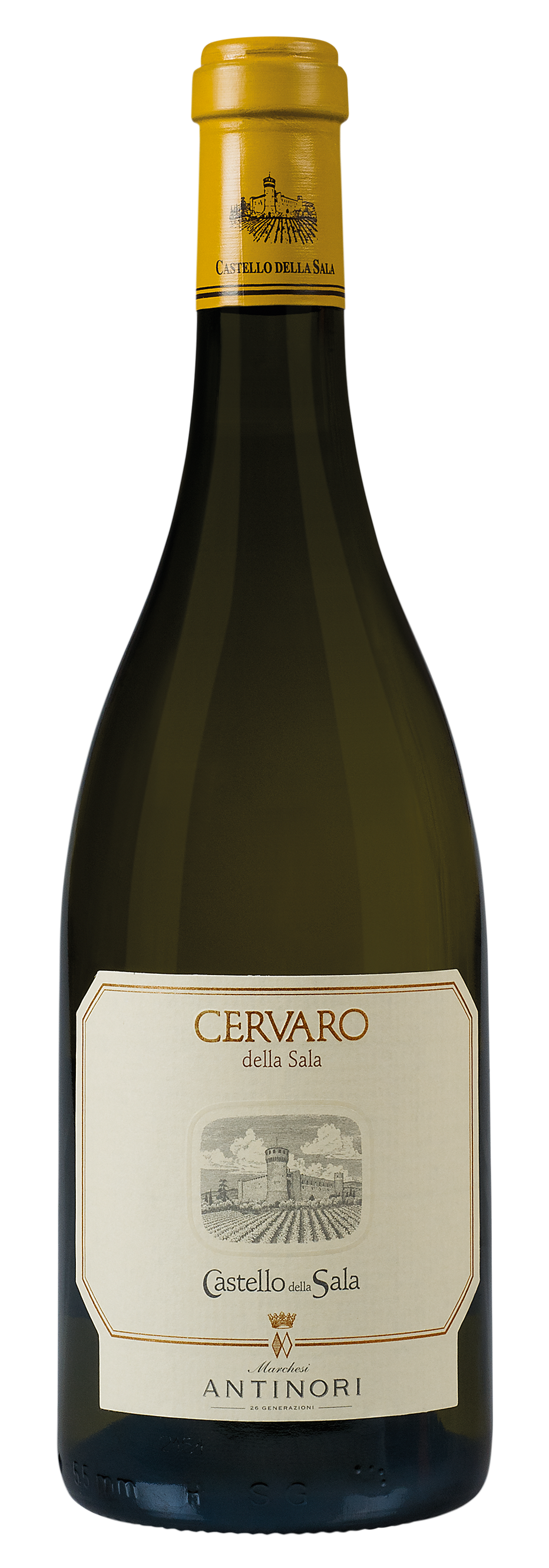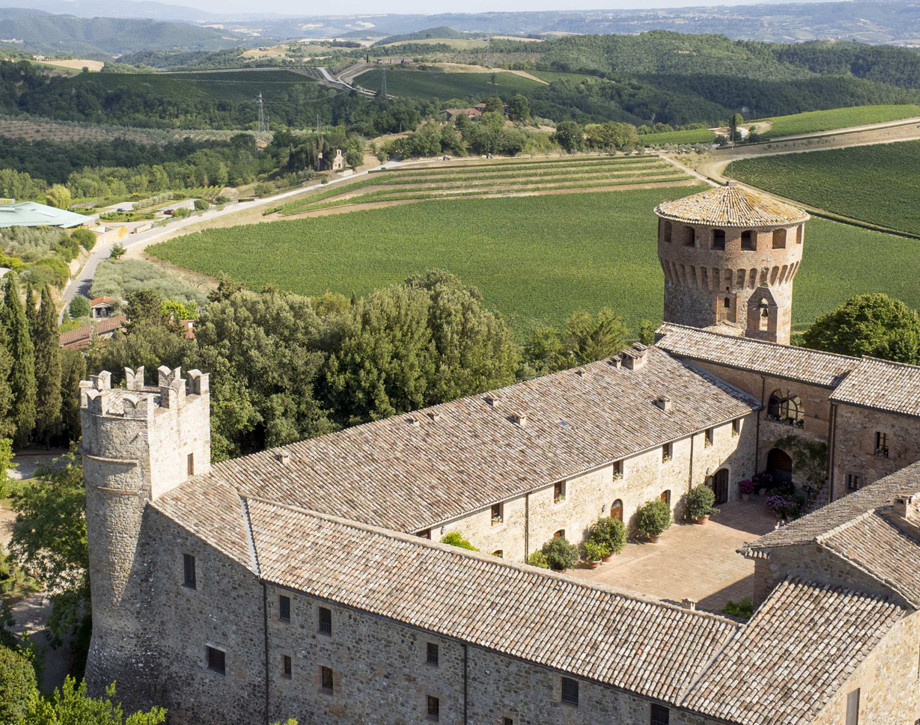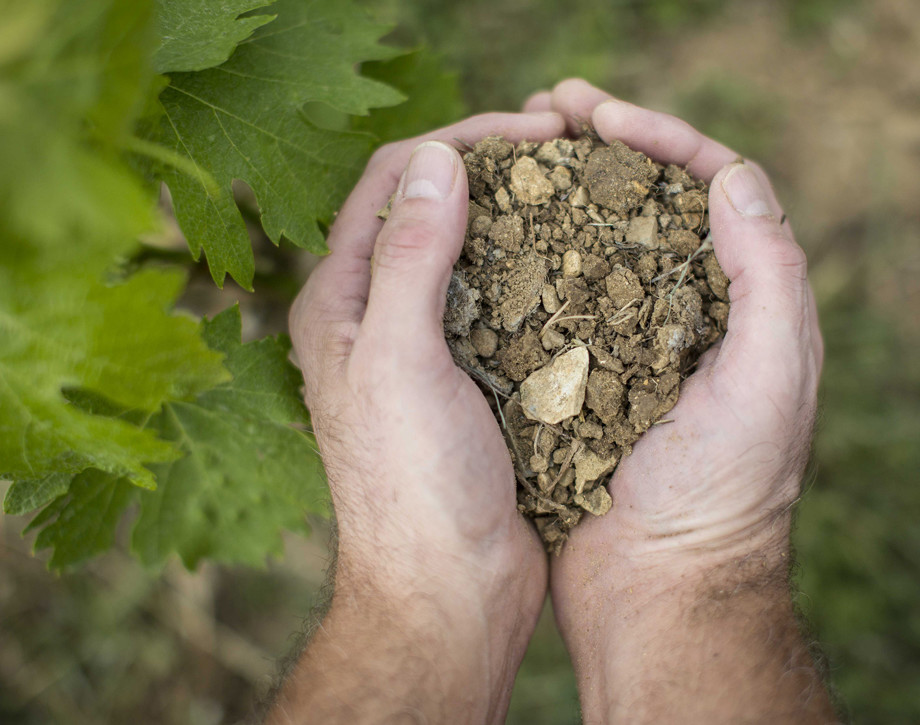Cervaro della Sala 2011
Climate
The 2011 vintage, particularly during the final phases, was one with a highly unusual growing season, particularly in its final phases: after a sunny but not particularly warm July with cool evenings, August was extremely hot and humid with minimal daytime to nighttime temperature swings. A well developed and well maintained vineyard canopy, along with sufficient ground water reserves, prevented both grape burn and berry shriveling, above all on early-ripening varieties such as Chardonnay and Sauvignon, and protected the grape bunches. The continuing heat wave made it necessary to pick the grapes with great timeliness, but the crop itself was rich in quality and gave fragrant and elegant wines, structured and with good acidity along with proper alcohol levels, all signs of much future longevity.
Vinification
The Cervaro grapes come from 15-20 year old vineyards planted around the castle at altitudes between 650 and 1300 feet (200-400 meters) on soils both rich in marine fossils and interlaced with strata of clay. Picked during the night, the crop was refrigerated before the operations of destemming and pressing. The two varieties ripen in different periods and were fermented and aged differently: the Chardonnay went through a short (4-6 hour) cold maceration and then fermented for 18 days in small French barrels where it remained on its lees for six months and was put through a complete malolactic fermentation. The Grechetto, instead, fermented and aged in stainless steel tanks. After blending and bottling (at 13.5° alcohol), the wine aged for ten months in the historic cellars of the castle.
Tasting Notes
The 2011 Cervaro della Sala, a luminous yellow with greenish highlights, shows toasted aromas along with notes of citrus and tropical fruit and lightly buttery sensations. Fresh and savory on the palate, it is long and persistent as well. Already pleasurable, it shows an important aging potential, the promise of excellent future evolution.
Awards
James Suckling 95/100 USA Wine Advocate 94+/100 USA Guida Bibenda 2013 - A.I.S. 5 Grappoli Italy Gambero Rosso "Vini d'Italia 2014" Guide Tre Bicchieri Italy Guida l'Espresso 18/20 Italy I Vini Di Veronelli 2014 Super Tre stelle Italy

The Wine
The name Cervaro comes from the noble family that owned Castello della Sala during the 14th century, Monaldeschi della Cervara. A blend of Chardonnay grapes and a small quantity of Grechetto make a wine that can age over time and represent the elegance and complexity of this unique estate. Cervaro della Sala is one of the first Italian white wines to have malolactic fermentation and aging take place in barriques. The first vintage of Cervaro to be produced was the 1985 vintage.

In Honor of the Monaldeschi della Cervara Family
The wine’s name honors the Monaldeschi della Cervara family who was the historic owner of Castello della Sala in the XVI century.
The Barrique
Cervaro della Sala was one of the first Italian white wines to have malolactic fermentation and aging take place in barriques.
The Concept
The idea behind Cervaro della Sala was to craft a white wine able to age over time.
The Enologist
In 1985, Renzo Cotarella, who was chief enologist at Castello della Sala at that time, made the first vintage of Cervaro della Sala.
Climate
The 2022 growing season in Orvieto began with warmer temperatures and dry conditions during both winter and spring. The month of June saw no precipitation and registered several heat spikes. Despite these climatic conditions, the vines did not suffer drought stress due to existing pedoclimatic conditions in Castello della Sala’s vineyards. Rain showers at the beginning of August revitalized both the vines and fruit allowing the grapes to reach optimal ripeness. This year’s dry weather ensured perfectly whole, healthy berries, minimized vineyard maintenance, and produced well-balanced, healthy fruit with a good aromatic profile. Harvesting activities of Chardonnay for Cervaro della Sala, which was of exceptional quality, got underway the third week of August. The grapes were fully mature, with outstanding freshness and had an excellent aromatic profile. Grechetto was harvested three weeks later, towards mid-September.
Vinification
The vinification cellar was designed to take full advantage of gravity flow; a concept that allows us to handle the harvested berries and fermentation processes as gently as possible without the use of mechanical pumps. The grapes are harvested in the early morning hours to preserve the purity of the fruit and protect it from elevated daytime temperatures. The must, which has undergone maceration on the skins at a temperature of 10 °C (50 °F) for about four hours, is first transferred by gravity flow into tanks for decantation and clarification, then transferred into barriques where alcoholic fermentation takes place followed by partial malolactic fermentation. In February, Chardonnay is ready to be transferred back into stainless steel vats and blended with Grechetto, which was fermented separately and did not age in oak. Afterwards, Cervaro della Sala aged in the bottle for several months in Castello della Sala’s historic cellars before being released for sale.
Historical Data
The name Cervaro comes from the noble family that owned Castello della Sala during the 14th century, Monaldeschi della Cervara. A blend of Chardonnay grapes and a small quantity of Grechetto make a wine that can age over time and represent the elegance and complexity of this unique estate. Cervaro della Sala is one of the first Italian wines to have malolactic fermentation and aging take place in barriques. The first vintage of Cervaro to be produced was the 1985 vintage.
Tasting Notes
Cervaro della Sala 2022 is a light straw yellow in color with greenish hues. The nose presents slight smoky notes of cedar and flint followed by floral hints of Spanish broom and mimosa blossoms. The palate is vibrant, fresh characterized by notes of vanilla, lemon butter and small pastries. Cervaro della Sala has outstanding aging potential but can be enjoyed immediately.

Castello della Sala
Castello della Sala is located in the Umbria region, not far from the Tuscan border, about 18 kilometers from the historic city of Orvieto. The Medieval castle’s property extends over an area of 600 hectares (1482 acres), 200 hectares (495 acres) are planted with vineyards at an altitude that varies between 220 and 470 meters above sea level (722/1541 feet) on the gently rolling hillsides that characterize the beautiful countryside in this area. Castello della Sala is the perfect place for growing white varieties. The vines grow in clay and calcareous based soils, rich in fossil shells, and they are well exposed to the rising of the sun with an excellent difference of temperature between day and night. The one exception to the rule is Pinot Noir, the only red variety that has found in this area ideal growing conditions to best express its full potential.

Soil
Originating in the Pliocene period, rich in marine fossils with veins of clay.
















